Tata Nexon EV
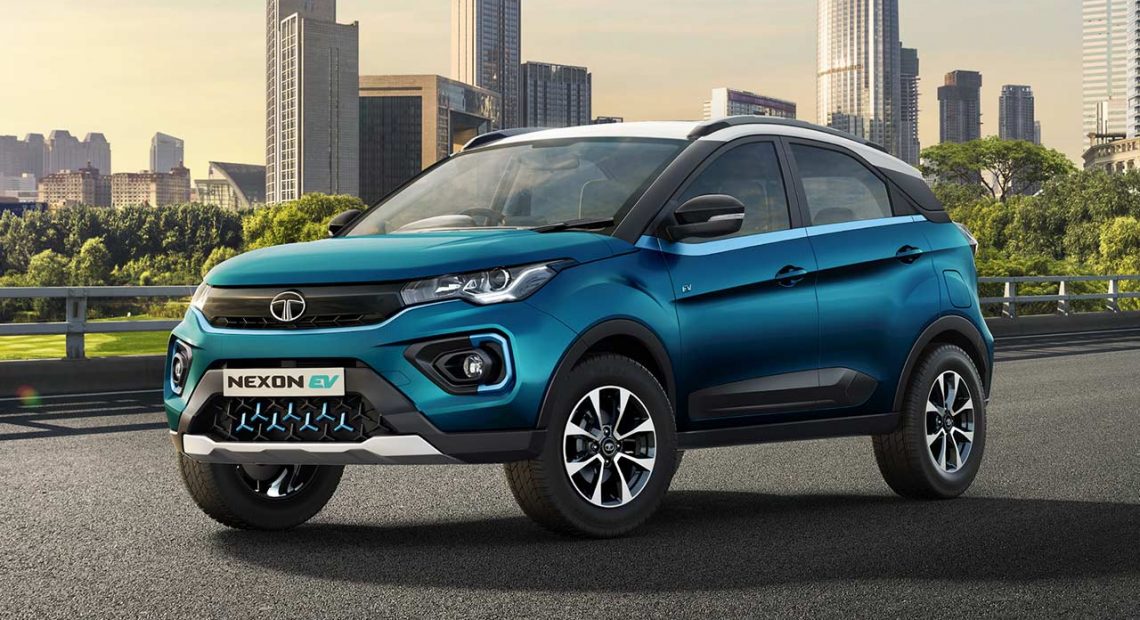
This may very well be India’s first affordable EV – and a proper one at that. Yes, there has been the E2O along with many other Mahindras, and the cheaper Tiago, but those had minuscule range and old battery technology. For it to be called a proper EV in our books, it has to have a high voltage setup and energy dense Lithium ion batteries. The Hyundai Kona was the first attempt at a proper EV we got, followed by the MG eZS and now we have a Tata that looks very promising.
On the face of it, it looks like any other face-lifted Nexon. Tata has gone for blue highlights to differentiate the EV from the regular internal combustion engined Nexons. The refreshed styling looks better with less rounded elements and a flatter bonnet. The 16 inch wheels are also new and Tata says that they are one kilogram lighter at each corner. It’s odd that Tata hasn’t offered LED headlamps or tail lamps in the EV, and it is an eyesore to see inefficient, incandescent bulbs on what is otherwise a very high tech modern day EV.
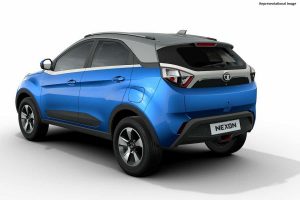
The interiors of the Nexon EV are very similar to that of the standard car, with good amount of space, decent quality cabin and comfortable seats. The gear selector is now a Land Rover style rotary dial. What gets you every time is that it’s a bit slow to engage drive or reverse, which is annoying considering it’s an EV and that there are no mechanical parts to engage. The instrument console has the same 7 inch display as the Altroz but has EV specific graphics and look nice. The seats are comfortable and supportive, with good visibility, all around. There is a top of the line Lux variant which gets an off-white interior in faux leather, a sun roof, automatic headlamps, automatic wipers etc. The car also gets most of the connectivity features for location based services, vehicle security, remote commands etc.
The 30.2kWh T shaped battery pack sits towards the centre of the car and under the rear seat, taking up the space of the fuel tank. As a result, the boot space remains unchanged at 350 litres. The battery pack adds quite a lot of weight to the Nexon and the EV weighs 150kgs more than the diesel Nexon. The battery pack has an IP67 rating and can go underwater for up to one metre not exceeding 30 minutes. It has also conformed to rigorous other tests such as crushing, fire, nail penetration etc to have an AIS 48 rating. Tata offers a warranty of 8 years or 160,000 km on the battery and the motor. Because of the positioning of the battery, the Nexon EV has a 50:50 weight distribution and a much lower centre of gravity than the standard IC engined car, although the ground clearance is just 4mm lower.
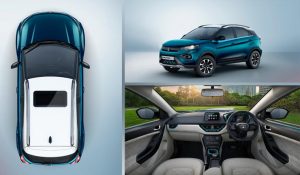
Under the hood, you will find an electric motor that is good for 129bhp and 245Nm. Press the throttle and the Nexon EV responds quite well. The power delivery is quite linear and you can drive around without using too much throttle. You can keep up with other cars easily and the smooth, silent nature of the EV is quite relaxing. If you are in a bit of a hurry and want to close the gaps in traffic quickly, select Sport on the gear lever. Now the throttle feels very enthusiastic and you get a lot of power for even a little bit of pedal travel. The car feels extremely lively and with no traction control or ESP, you tend to spin the wheels when all that torque comes in one bit. It takes some getting used to the electric motor’s instant power delivery and quick throttle response when coming off a petrol/diesel car. Acceleration is very strong and the Nexon EV manages 0-100kmph in 9.6 seconds. Like most EVs, it feels much faster than it is because of the way it delivers its output. Top speed is limited to 120kmph though.
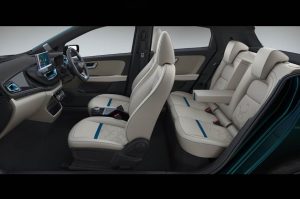 The Nexon has retuned suspension with stiffer springs and dampers to suit the EV’s extra weight. It feels firmer on broken roads, but overall it isn’t far removed from the standard Nexon’s. Where it gets a lot better is in the dynamics front. The car feels much tauter and goes into corners better. The lower centre of gravity and the near 50:50 weight distribution help here, but it is also down to the fact that the strong battery casing acts as a load bearing member, which also makes the overall chassis much stiffer. Select ‘S’ on the drive, and you can surely have some fun with this EV.
The Nexon has retuned suspension with stiffer springs and dampers to suit the EV’s extra weight. It feels firmer on broken roads, but overall it isn’t far removed from the standard Nexon’s. Where it gets a lot better is in the dynamics front. The car feels much tauter and goes into corners better. The lower centre of gravity and the near 50:50 weight distribution help here, but it is also down to the fact that the strong battery casing acts as a load bearing member, which also makes the overall chassis much stiffer. Select ‘S’ on the drive, and you can surely have some fun with this EV.
So, what did we not like about the Nexon EV? It does consume a lot of energy in ‘S’ and you will not get anywhere close to the 312kms ARAI certified range. And once the charge drops below 25 percent, it will not allow you to be in Sport anymore and there is a drastic reduction in available power to get you home. This is an oversight, because even if you know there is a charging station only two kilometres away, you still have to drive slowly to get there, which is bad if you are in an emergency.
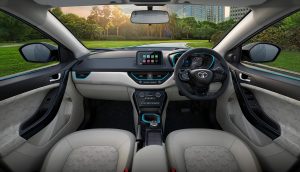
Another gripe is that, although the car has hill start assist, there is a momentary delay before that gets activated, and the Nexon EV rolls back a fair bit before it can move forwards. Pressing the brakes to stop it rolling backwards, will only delay things further and make matters worse and this can get confusing. You would also wish the amount of regeneration was variable to suit driver preferences, because out on the highway, you may want less re-gen to be able to coast more with a light throttle.
These things aside, the Nexon EV is quite a promising SUV for the price. While building a totally new skate board chassis with hub motors is the best way to build an EV, Tata’s approach is much simpler and very cost effective. Taking an existing production car platform and turning it into an EV, by fitting the electric motor and controllers under the hood where the engine used to be, is much simpler from a manufacturing perspective. That Tata chose to go with the Nexon – a well-received compact SUV, is pure genius. Prices start from around Rs.14 lakhs, and if you want to be one of those early EV adopters, be sure to give this one a look.
Pic Courtesy: google/ images are subject to copyright







